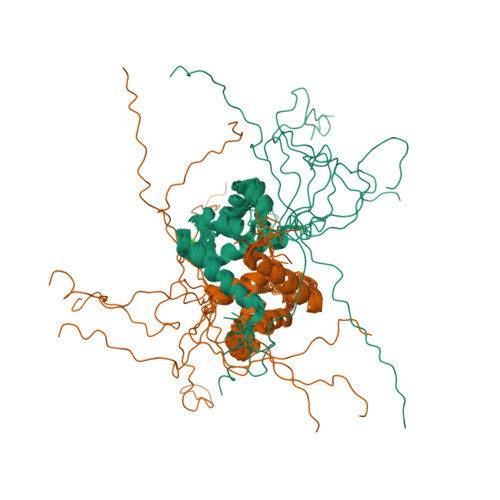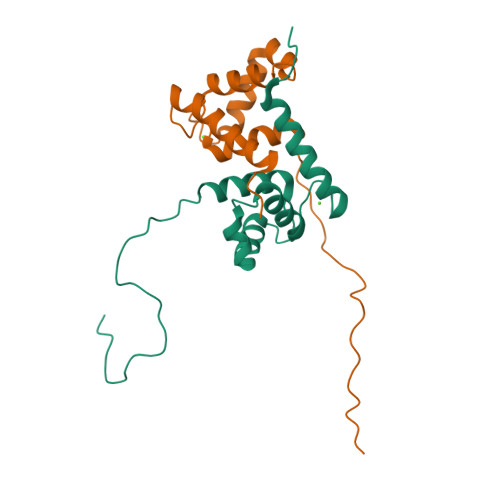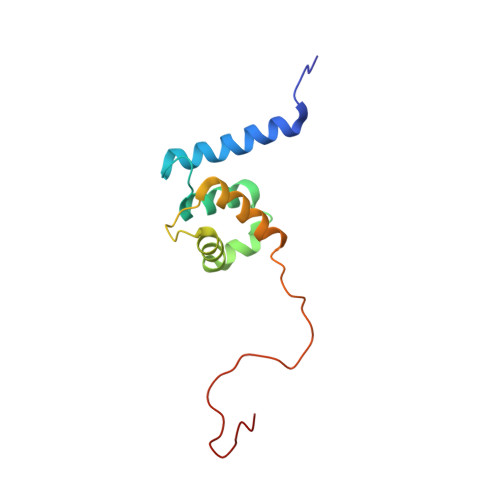Evolution avoids a pathological stabilizing interaction in the immune protein S100A9.
Harman, J.L., Reardon, P.N., Costello, S.M., Warren, G.D., Phillips, S.R., Connor, P.J., Marqusee, S., Harms, M.J.(2022) Proc Natl Acad Sci U S A 119: e2208029119-e2208029119
- PubMed: 36194634
- DOI: https://doi.org/10.1073/pnas.2208029119
- Primary Citation of Related Structures:
7UI5 - PubMed Abstract:
Stability constrains evolution. While much is known about constraints on destabilizing mutations, less is known about the constraints on stabilizing mutations. We recently identified a mutation in the innate immune protein S100A9 that provides insight into such constraints. When introduced into human S100A9, M63F simultaneously increases the stability of the protein and disrupts its natural ability to activate Toll-like receptor 4. Using chemical denaturation, we found that M63F stabilizes a calcium-bound conformation of hS100A9. We then used NMR to solve the structure of the mutant protein, revealing that the mutation distorts the hydrophobic binding surface of hS100A9, explaining its deleterious effect on function. Hydrogen-deuterium exchange (HDX) experiments revealed stabilization of the region around M63F in the structure, notably Phe37. In the structure of the M63F mutant, the Phe37 and Phe63 sidechains are in contact, plausibly forming an edge-face π-stack. Mutating Phe37 to Leu abolished the stabilizing effect of M63F as probed by both chemical denaturation and HDX. It also restored the biological activity of S100A9 disrupted by M63F. These findings reveal that Phe63 creates a molecular staple with Phe37 that stabilizes a nonfunctional conformation of the protein, thus disrupting function. Using a bioinformatic analysis, we found that S100A9 proteins from different organisms rarely have Phe at both positions 37 and 63, suggesting that avoiding a pathological stabilizing interaction indeed constrains S100A9 evolution. This work highlights an important evolutionary constraint on stabilizing mutations, namely, that they must avoid inappropriately stabilizing nonfunctional protein conformations.
Organizational Affiliation:
Department of Chemistry and Biochemistry, University of Oregon, Eugene, OR 97403.

















